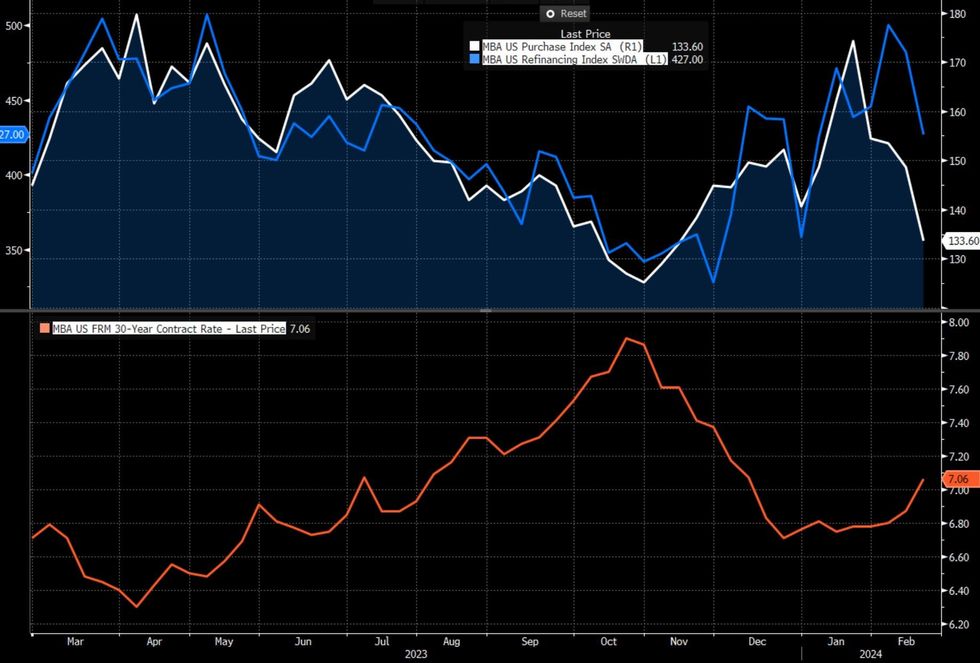-
Policy
Policy
Exclusive interviews with leading policymakers that convey the true policy message that impacts markets.
LATEST FROM POLICY: -
EM Policy
EM Policy
Exclusive interviews with leading policymakers that convey the true policy message that impacts markets.
LATEST FROM EM POLICY: -
G10 Markets
G10 Markets
Real-time insight on key fixed income and fx markets.
Launch MNI PodcastsFixed IncomeFI Markets AnalysisCentral Bank PreviewsFI PiFixed Income Technical AnalysisUS$ Credit Supply PipelineGilt Week AheadGlobal IssuanceEurozoneUKUSDeep DiveGlobal Issuance CalendarsEZ/UK Bond Auction CalendarEZ/UK T-bill Auction CalendarUS Treasury Auction CalendarPolitical RiskMNI Political Risk AnalysisMNI Political Risk - US Daily BriefMNI Political Risk - The week AheadElection Previews -
Emerging Markets
Emerging Markets
Real-time insight of emerging markets in CEMEA, Asia and LatAm region
-
Commodities
-
Credit
Credit
Real time insight of credit markets
-
Data
-
Global Macro
Global Macro
Actionable insight on monetary policy, balance sheet and inflation with focus on global issuance. Analysis on key political risk impacting the global markets.
Global MacroDM Central Bank PreviewsDM Central Bank ReviewsEM Central Bank PreviewsEM Central Bank ReviewsBalance Sheet AnalysisData AnalysisEurozone DataUK DataUS DataAPAC DataInflation InsightEmployment InsightGlobal IssuanceEurozoneUKUSDeep DiveGlobal Issuance Calendars EZ/UK Bond Auction Calendar EZ/UK T-bill Auction Calendar US Treasury Auction Calendar Global Macro Weekly -
About Us
To read the full story
Sign up now for free trial access to this content.
Please enter your details below.
Why MNI
MNI is the leading provider
of intelligence and analysis on the Global Fixed Income, Foreign Exchange and Energy markets. We use an innovative combination of real-time analysis, deep fundamental research and journalism to provide unique and actionable insights for traders and investors. Our "All signal, no noise" approach drives an intelligence service that is succinct and timely, which is highly regarded by our time constrained client base.Our Head Office is in London with offices in Chicago, Washington and Beijing, as well as an on the ground presence in other major financial centres across the world.
Real-time Actionable Insight
Get the latest on Central Bank Policy and FX & FI Markets to help inform both your strategic and tactical decision-making.
Free AccessMNI ASIA OPEN: 25Bp Cut Still Expected From FOMC Wednesday
MNI ASIA MARKETS ANALYSIS: Ylds Climb to 3W Highs Ahead FOMC
Mortgage Activity Fades As Rates Rebound
The latest round of MBA mortgage statistics (through the week to Feb 16) showed a continued pullback in mortgage activity since the start of February as rates have ticked higher, ending a short-lived rebound.
- MBA mortgage applications fell 10.6% W/W last week (vs -3.3% prior revised), with the Refinance index down 11% (up 0.1% Y/Y) and the seasonally-adjusted Purchase Index down 10%, with the unadjusted Index down 6% (down 13% Y/Y).
- Refinancing activity has now pulled back for 2 consecutive weeks (back to early January levels), with purchases down for 4 consecutive weeks (and back to mid-November levels). After briefly hitting the highest levels since April 2023 in January, the Purchase Index (133.60) is now not far from its October low (125.20) which was the lowest since the mid-1990s.
- The explanation for the pullback is straightforward: 30-Year conforming mortgage rates ticked up to the highest since early December last week (7.06% vs 6.87% prior). After peaking at 7.90% in October, the rate hit a low of 6.71% in mid-December, spurring a rebound in refinancing/purchase activity which is now fading as Fed rate cuts are now seen as a more distant prospect - see chart below.
- As such, this is an area of the economy where the Fed appears to have relatively more control on activity, though the end-product in terms of inflation remains in question with a residential construction of new homes remaining robust as fixed long-term mortgages have brought the existing homes sales market to a halt.
- Minneapolis Fed Pres Kashkari - at the hawkish end of the FOMC spectrum - noted housing activity as one piece of data that "lead me to question how much downward pressure monetary policy is currently placing on demand".
 MBA Indices (Top) Source: MBA, BBG, MNI
MBA Indices (Top) Source: MBA, BBG, MNI
To read the full story
Sign up now for free trial access to this content.
Please enter your details below.
Why MNI
MNI is the leading provider
of intelligence and analysis on the Global Fixed Income, Foreign Exchange and Energy markets. We use an innovative combination of real-time analysis, deep fundamental research and journalism to provide unique and actionable insights for traders and investors. Our "All signal, no noise" approach drives an intelligence service that is succinct and timely, which is highly regarded by our time constrained client base.Our Head Office is in London with offices in Chicago, Washington and Beijing, as well as an on the ground presence in other major financial centres across the world.
